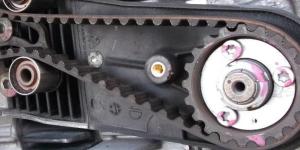When should I change my car's suspension


Suspensions not only provide comfort when driving but also guarantee safety as they help to control the vehicle, especially at high speeds and in risky manoeuvres. In fact, they are considered one of the three essential components of the 'triangle of security', together with tires and brakes. This article will explain what signs indicate the need to check and maybe change your car's suspension.
Aquaplaning
Aquaplaning is caused by poor adherence to the road in situations of rain or wet surfaces. This can be corrected or lessened if the suspension is in good condition as it reduces the formation of a film of water between the tire and the road. Additionally, a well-maintained suspension enhances tire grip, which is crucial for maintaining control in wet conditions and preventing the vehicle from skidding.

Roll and side slip
Curves and sharp turns are other situations in which drivers must count on perfectly maintained suspension. They provide greater security. In critical situations, it is essential to maintain control of the vehicle and secure road holding. Rolling, side shift, and loss of vehicle direction are effects that can be corrected when you have perfectly maintained suspension. Moreover, a robust suspension system can significantly reduce the risk of rollovers, especially in SUVs and taller vehicles.

Steering wheel vibration
As the shock absorbers are responsible for a good road holding, if defective, they produce a constant wobble of the steering wheel as the wheels constantly bounce; this may even lead to the car coming off the road. In these cases, the vehicle behaves in an imprecise and unstable manner. Similarly, worn suspensions contribute to the wear of other elements of the suspension (spring and stabilizer bar) as well as other breakages. It's worth noting that persistent steering wheel vibration can also lead to driver fatigue, reducing overall driving safety.
Errors in Security Systems
Currently, there is widespread use of security systems like TSC and ESP, whose function is to act automatically in cases of vehicle instability, such as loss of control, etc. If shock absorbers are not in optimal conditions, the vehicle does not work properly and so these systems misinterpret the signals emitted by the car. This can lead to incorrect system responses, potentially exacerbating unsafe conditions rather than mitigating them.
Tire wear and increased braking distance
Tires are other items that are damaged by bad maintenance, leading to additional wear and a reduction of tire lifespan by 20%. If a vehicle has both worn tires and suspension in disrepair, braking distance at 100 km/hr can increase by 3 meters. It is even more dangerous if the vehicle has an ABS braking system, increasing the braking distance to a further 5 meters. This is because the tire bounces and jumps, losing contact with the road surface. Ensuring regular suspension checks can help maintain the alignment and balance of the tires, further enhancing safety and performance.
Change the suspension every 60,000 kilometres
Experts advise replacing the suspension and some suspension elements every 60,000 kilometres. Tests have shown that shock absorbers and suspension in the originally fitted equipment deteriorate noticeably at 60,000 km. In many standard vehicles, replacing these worn parts can improve the handling characteristics and comfort. Regular checks can also help to identify any premature wear, allowing for timely intervention and preventing more costly repairs down the line.
If you want to read similar articles to When should I change my car's suspension, we recommend you visit our Car Maintenance and Repair category.
Tips
- If you notice any of these symptoms, we recommend you go to your mechanic, as they can provide the most effective solutions. Regular professional inspections can prevent further damage and ensure your vehicle remains safe and reliable.






